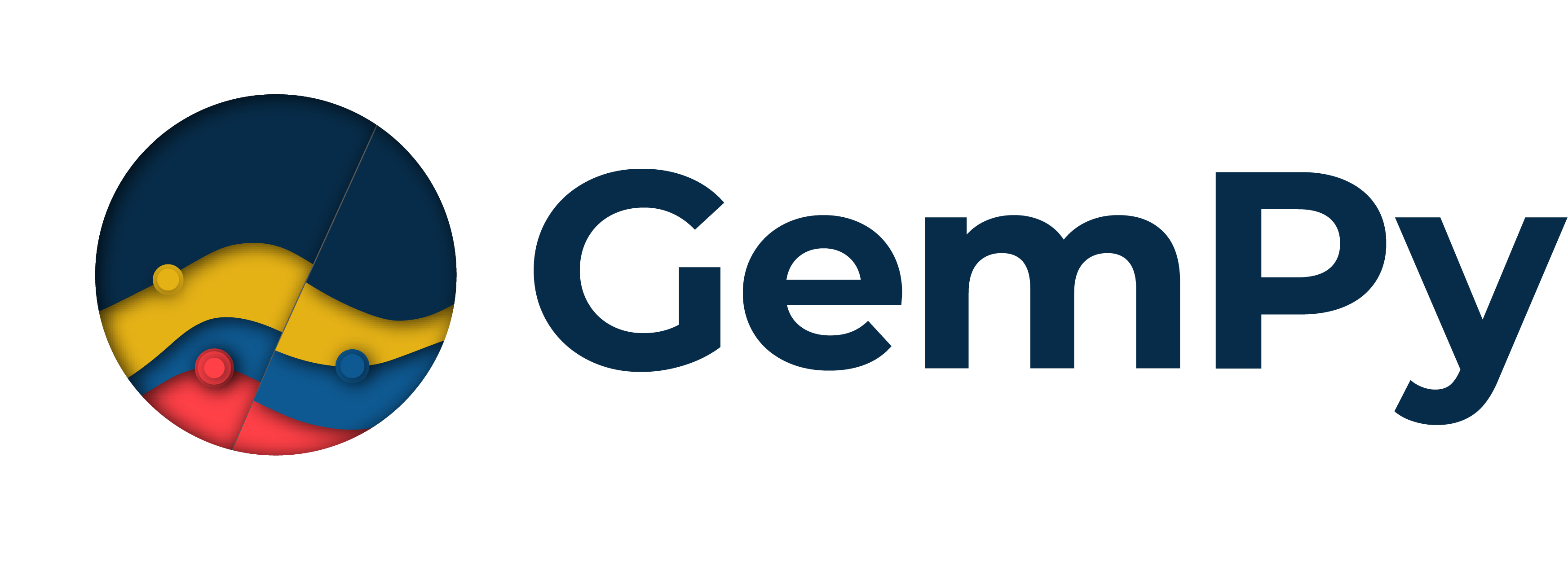Note
Click here to download the full example code
1.3c: Adding topography to geological models¶
import gempy as gp
import numpy as np
import matplotlib.pyplot as plt
import os
1. The common procedure to set up a model:¶
data_path = 'https://raw.githubusercontent.com/cgre-aachen/gempy_data/master/'
geo_model = gp.create_model('Single_layer_topo')
gp.init_data(geo_model, extent=[450000, 460000, 70000, 80000, -1000, 500],
resolution=[50, 50, 50],
path_i=data_path + "/data/input_data/tut-ch1-7/onelayer_interfaces.csv",
path_o=data_path + "/data/input_data/tut-ch1-7/onelayer_orient.csv")
Out:
Active grids: ['regular']
Single_layer_topo 2021-04-18 11:28
use happy spring colors!
geo_model.surfaces.colors.change_colors({'layer1': '#ff8000', 'basement': '#88cc60'})
gp.map_stack_to_surfaces(geo_model, {'series': ('layer1', 'basement')})
s = {'s1': ([450000, 75000], [460000, 75500], [100, 100])}
geo_model.set_section_grid(s)
Out:
Active grids: ['regular' 'sections']
2. Adding topography¶
2 a. Load from raster file¶
This is to make it work in sphinx gallery
geo_model.set_topography(source='gdal', filepath=fp)
gp.plot_2d(geo_model, show_topography=True, section_names=['topography'], show_lith=False,
show_boundaries=False,
kwargs_topography={'cmap': 'gray', 'norm': None}
)
plt.show()

Out:
Cropped raster to geo_model.grid.extent.
depending on the size of the raster, this can take a while...
storing converted file...
Active grids: ['regular' 'topography' 'sections']
2 b. create fun topography¶
If there is no topography file, but you think that your model with
topography would look significantly cooler, you can use gempys
set_topography function
to generate a random topography based on a fractal grid:
sphinx_gallery_thumbnail_number = 2
geo_model.set_topography(source='random')
gp.plot_2d(geo_model, show_topography=True, section_names=['topography'])
plt.show()

Out:
[200. 500.]
Active grids: ['regular' 'topography' 'sections']
It has additional keywords to play around with:
- fd: fractal dimension:
defaults to 2.0. The higher (try 2.9), the rougher the landscape will be.
- d_z: height difference:
If none, last 20% of the model in z direction.
- extent:
extent in xy direction. If none,
geo_model.grid.extentis used.
- resolution:
resolution of the topography array. If none,
geo_model.grid.resoutionis used. Increasing the resolution leads to much nicer geological maps!
geo_model.set_topography(source='random', fd=1.9, d_z=np.array([0, 250]),
resolution=np.array([200, 200]))
Out:
Active grids: ['regular' 'topography' 'sections']
Grid Object. Values:
array([[450100. , 70100. , -985. ],
[450100. , 70100. , -955. ],
[450100. , 70100. , -925. ],
...,
[460000. , 75500. , 469.6969697 ],
[460000. , 75500. , 484.84848485],
[460000. , 75500. , 500. ]])
Note that each time this function is called, a new random topography is created. If you particularly like the generated topography or if you have loaded a large file with gdal, you can save the topography object and load it again later:
save:
geo_model._grid.topography.save('test_topo')
load:
geo_model.set_topography(source='saved', filepath='test_topo.npy')
Out:
Active grids: ['regular' 'topography' 'sections']
Grid Object. Values:
array([[450100. , 70100. , -985. ],
[450100. , 70100. , -955. ],
[450100. , 70100. , -925. ],
...,
[460000. , 75500. , 469.6969697 ],
[460000. , 75500. , 484.84848485],
[460000. , 75500. , 500. ]])
Compute model¶
gp.set_interpolator(geo_model)
Out:
Setting kriging parameters to their default values.
Compiling theano function...
Level of Optimization: fast_compile
Device: cpu
Precision: float64
Number of faults: 0
Compilation Done!
Kriging values:
values
range 14221.46
$C_o$ 4815476.19
drift equations [3]
<gempy.core.interpolator.InterpolatorModel object at 0x7fcb8ae537f0>
gp.compute_model(geo_model, compute_mesh=False, set_solutions=True)
Out:
Lithology ids
[2. 2. 2. ... 1. 1. 1.]
Visualize:¶
Now, the solutions object does also contain the computed geological map. It can be visualized using the 2D and 3D plotting functionality:
gp.plot_2d(geo_model, show_topography=True, section_names=['topography'], show_boundaries=False, show_data=True)
plt.show()

gp.plot_2d(geo_model, show_topography=True, section_names=['s1'])
plt.show()

g3d = gp.plot_3d(geo_model,
show_topography=True,
show_lith=False,
show_surfaces=False,
show_results=False,
ve=5)

sphinx_gallery_thumbnail_number = 3
g3d = gp.plot_3d(geo_model,
show_topography=True,
show_lith=True,
show_surfaces=True,
ve=5)

Total running time of the script: ( 0 minutes 13.109 seconds)
